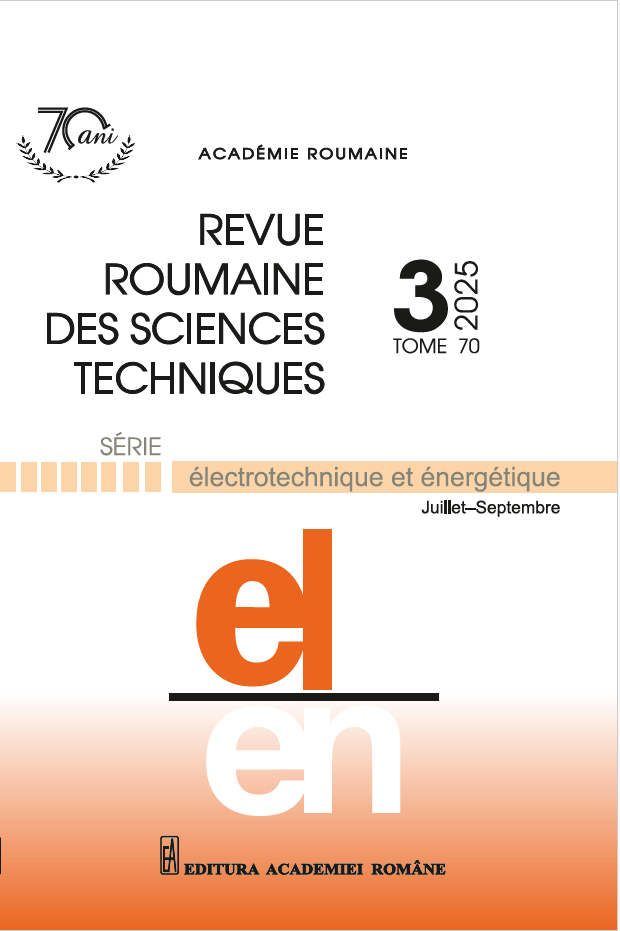THE IMPACT OF ARTIFICIAL INTELLIGENCE ON HEALTHCARE
DOI:
https://doi.org/10.59277/RRST-EE.2025.3.23Keywords:
Artificial Intelligence, Healthcare, Large language models, Explainable Artificial Intelligence, Generative Artificial IntelligenceAbstract
The advanced development of artificial intelligence (AI) in healthcare has exhibited such promise hence it revolutionizes diagnostic precision, facilitates personalized treatments, and streamlines procedures. AI has progressed from primitive rule-based systems such as MYCIN to today's last generation of AI models such as GPT-4 and Med-Gemini. AI has been quite consistent in enhancing its capabilities and bringing continuing innovation in evidence-based medicine from medical-image predictive analytics to patient monitoring. Explainable AI (XAI) helps address the main problems of trust in AI because it allows transparent and understandable machine-learning predictions on which the physician can rely. Our paper investigates the potential of AI to change the delivery of care and define the cost, access, and outcome of care for different populations within the integration of human expertise and machine efficiency in the near future. Future research would need to combine innovation with ethical considerations and achieve full adoption, with regard to its potential and quality operation in the healthcare sector.
References
(1) 1. S. Palanisamy, T. Ramasamy, Medi-Net: Cloud-based framework for medical data retrieval system using deep learning, Rev. Roum. Des Sci. Tech. — Série Électrotechnique Énergétique, 69, 2, pp. 255–260 (2024).
(2) A. Ramaiah, P.D. Balasubramanian, A. Appathurai, N.A. Muthukumaran, Detection Of Parkinson’s disease via Clifford gradient-based recurrent neural network using multi-dimensional data, Rev. Roum. Des Sci. Tech. — Série Électrotechnique Énergétique, 69, 1, pp. 103–108 (2024).
(3) E.H. Shortliffe, Mycin: A Knowledge-Based Computer Program Applied To Infectious Diseases, Proc Annu Symp Comput Appl Med Care (1977).
(4) V.L. Yu, L.M. Fagan, S.W. Bennett, W.J. Clancey, A.C. Scott, J.F. Hannigan, R.L. Blum, B.G. Buchanan, S.N. Cohen, An Evaluation Of Mycin’s Advice, 1979.
(5) N. Shahid, T. Rappon, W. Berta, Applications Of Artificial Neural Networks In Health Care Organizational Decision-Making: A Scoping Review, Plos One, 14, 2, P. E0212356 (2019).
(6) ***Google DeepMind.
(7) J. Yim, et al., Predicting conversion to wet age-related macular degeneration using Deep Learning, Nat. Med. 2020, 26, 6, pp. 892–899 (2020).
(8) R.A. Craciun, R.N. Pietraru, M.A. Moisescu, Internet Of Things Platform Benchmark: An Artificial Intelligence Assessment, Rev. Roum. Des Sci. Tech. — Série Électrotechnique Énergétique, 69, 1, pp. 97–102 (2024).
(9) T.C. Lu, C.M. Fu, M.H.M. Ma, C.C. Fang, A.M. Turner, Healthcare Applications Of Smart Watches: A Systematic Review, Appl. Clin. Inform., 7, 3, pp. 850 (2016).
(10) A. Varghese, J. Varghese, J. Biju, R. Thomas, M. Thomas, K. Jyothi, Explainable Ai In Healthcare Applications, Int. Res. J. Adv. Eng. Manag., 2, 12, pp. 3671–3679 (2024).
(11) A. Rai, Explainable Ai: From Black Box To Glass Box, J. Acad. Mark. Sci., 48, 1, pp. 137–141 (2020).
(12) M. Panda, S.R. Mahanta, Explainable Artificial intelligence for healthcare applications using random forest classifier with lime and shap, Arxiv (2023).
(13) O. Lohaj, J. Paralič, P. Bednár, Z. Paraličová, M. Huba, Unraveling Covid-19 dynamics via machine learning and Xai: Investigating variant influence and prognostic classification, Mach. Learn. Knowl. Extr. 2023, 5, 4, pp. 1266–1281 (2023).
(14) E. Gómez-González, E. Gomez, J. Marquez-Rivas, M. Guerrero-Claro, I. Fernandez-Lizaranzu, M.I. Relimpio-Lopez, M.E. Dorado, M.J. Mayorga-Buiza, G. Izquierdo-Ayuso, L. Capitan-Morales, Artificial intelligence in medicine and healthcare: A review and classification of current and near-future applications and their ethical and social impact, preprint, (2025).
(15) C. Wang, M. Li, J. He, Z. Wang, E. Darzi, Z. Chen, J. Ye, T. Li, Y. Su, J. Ke, K. Qu, S. Li, Y. Yu, P. Lio, T. Wang, Y. G. Wang, Y. Shen, A survey for large language models in biomedicine, Preprint (2024).
(16) A.K. Momani, Implications of artificial intelligence on health data privacy and confidentiality, Deep Learning Monitor (2025).
(17) X. Wang, N.X. Zhang, H. He, R. Nguyen, K.H. Yu, H. Deng, C. Brandt, D.S. Bitterman, L. Pan, C.Y. Cheng, J. Zou, D. Liu, Safety challenges of Ai in medicine in the era of large language models, preprint (2025).
(18) V. Sivaraman, L.A. Bukowski, J. Levin, J.M. Kahn, A. Perer, Ignore, trust, or negotiate: Understanding clinician acceptance of AI-based treatment recommendations in health care; CHI Conference on Human Factors in Computing Systems, pp. 18 (2023)
(19) N. Scharowski, S.A.C. Perrig, F. Brühlmann, Trust and reliance in Xai-Distinguishing between attitudinal and behavioral measures, arXiv (2022).
(20) H. Nori, N. King, S.M. McKinney, D. Carignan, E. Horvitz, Capabilities of GPT-4 on medical challenge problems, Arxiv (2023).
(21) K. Saab, et al., Capabilities of Gemini models in medicine, Deep. Google Research (2024).
Downloads
Published
Issue
Section
License
Copyright (c) 2025 REVUE ROUMAINE DES SCIENCES TECHNIQUES — SÉRIE ÉLECTROTECHNIQUE ET ÉNERGÉTIQUE

This work is licensed under a Creative Commons Attribution-NonCommercial-NoDerivatives 4.0 International License.


